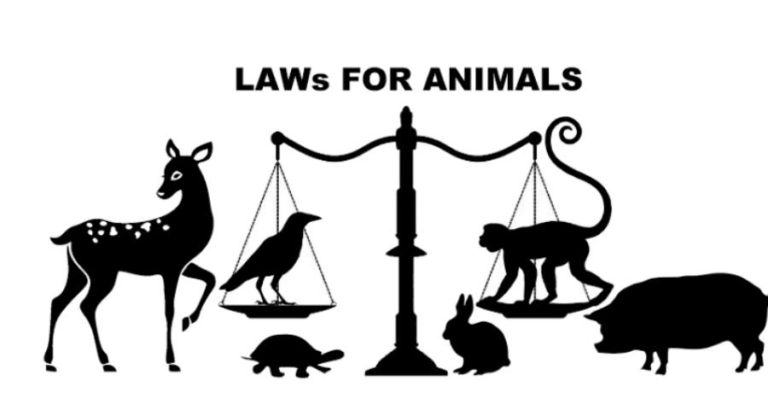
INTRODUCTION:
The Indian Parliament passed the Environment Protection Act, 1986 in May of that year, and it went into effect on November 19 of that same year. The Act, which consists of four chapters and 26 parts, was mostly drafted in response to the Bhopal gas leak. The Act was passed by the Indian government in accordance with Article 253 of the Indian Constitution, which gives the union government the authority to pass legislation to implement the terms of any international agreements the nation has signed.
The Act’s goal is to put the United Nations Conference on the Human Environment’s rulings into effect. They have to do with preserving and enhancing the environment for people as well as preventing risks to people, other living things, plants, and property. The Act, a type of “umbrella” law, established the foundation for India’s environmental regulation regime, which applies to all significant infrastructural and industrial operations as well as the prohibition and regulation of certain activities in coastal and environmentally vulnerable areas. Coordination of the actions of numerous federal and state agencies created under other environmental laws, such the Water Act and the Air Act, is another feature of the Act.
Out of the 4 chapters in this Act, Chapter I contains the introduction and definitions..
DEFINITIONS: Throughout this Act, unless the context dictates otherwise:
- The term “environment” refers to the elements of water, air, and land as well as the interactions and relationships that these elements have with humans, other living things, plants, microorganisms, and property;
- “environmental pollutant” refers to any solid, liquid, or gaseous material existing in an amount that could harm the environment or have the potential to do so;
- “environmental pollution” refers to any environmental pollutant present in the environment;
- Any substance’s manufacturing, processing, treatment, packaging, storage, transportation, use, collection, destruction, conversion, offering for sale, transfer, or similar actions are all considered “handling”;
- A “hazardous substance” is any material or preparation that poses a risk to people, other living things, plants, microorganisms, property, or the environment due to its handling, chemical composition, or physico-chemical qualities;
- A “occupier” is defined as an individual who possesses authority over the operations of a factory or premises. This also includes the person who is in possession of any substance;
- “prescribed” refers to guidelines established by this Act’s rules.
The issues covered in Chapter II include the Central Government’s authority to take action to safeguard and enhance the environment, the appointment of officers and their roles, the authority to issue directives, and regulations pertaining to environmental pollution. Chapter III covers subjects linked to the prevention, control, and mitigation of environmental pollution, including:
- People operating businesses, etc., refraining from allowing the emission or discharge of environmental pollutants over permissible limits;
- Adhering to procedural protections while handling hazardous materials;
- In some situations, providing information to agencies and authorities;
- Permissions to enter and examine;
- Authority to collect a sample and determine the appropriate course of action therefrom;
- Labs for the environment;
- Government analysts
- Government analyst reports;
- Penalties for breaking the act’s requirements as well as its regulations, directives, and instructions;
- Business offenses;
- Government departments’ transgressions
Chapter IV contains all the miscellaneous topics such as:
- safeguarding actions taken in good faith;
- acknowledging offenses;
- information, reports, or returns;
- public servant status for members, officers, and staff of the authority established under section 3;
- jurisdiction bar;
- powers to delegate;
- effect of other laws;
- rules made under this act to be laid before parliament
AIMS AND OBJECTIVES OF THE ACT:
The following is a list of the main goals and purposes of the Environment Protection Act of 1986.
- Putting into practice the resolutions reached at the Stockholm United Nations Conference on the Human Environment.
- Establishing a regulatory body within the government with the power to impose closure orders and other direct orders on business.
- Organizing the many agencies that are functioning in accordance with the legislation currently in place.
- Regularly passing legislation to save the environment.
- Enforcing sanctions against people who pose a risk to public health, safety, or the environment. The punishment for each infraction or failure is one of up to five years in prison, a fine of up to one lakh rupees, or both. There is also a possibility of a seven-year extension.
- Contributing to the environment’s sustainable development
- Securing the Constitution’s Article 21 protection of the right to life

PROVISIONS OF THE ACT:
The Center is authorized by the EPA to “take all such measures as it deems necessary”
for environmental protection.
- It is authorized by law to organize and carry out national policies and programs to
enhance environmental protection. - This law can place limitations on the placement of industries. • It can demand
environmental quality standards, especially those pertaining to the emission or
discharge of environmental pollutants. - The EPA expressly forbids the discharge of environmental pollutants in excess of
established regulatory standards. The law grants the government the right of entry for
inspection, testing, and other purposes. It also grants the government the authority to
analyze samples of air, water, soil, or any other substance from any location. - Additionally, a special rule prohibiting handling dangerous materials unless done so in
accordance with legal requirements is in force. - The Act gives anyone the ability to submit a complaint in a court about any violation
of its provisions, with the exception of authorized government agents.
DRWABACKS OF THIS ACT
Complete Centralization of the Act: The Act’s centralization may be a disadvantage. Although the federal government has so broad authority and the state governments have none, the federal government is nevertheless subject to abuse and arbitrary decisions. Additionally, there is no mention of public participation in environmental protection in the Act. In order to prevent arbitrariness and increase environmental awareness and empathy, it is necessary to involve citizens in environmental protection. The Act’s coverage of pollutants is incomplete as it ignores contemporary concepts of pollution, such as radiation waves, noise, and an overworked transportation system, all of which are significant contributors to the environment’s degradation.
CITATIONS:
- On September 29, 2010, Ajay Dubey v. The State of Madhya Pradesh
- On April 1, 2020, Alembic Pharmaceuticals Ltd. vs. Rohit Prajapati
- On April 12, 2017, Sarin Memorial Legal Aid Foundation v. State of Punjab & Ors.
- On June 26, 2002, the M.P. State Electricity Board lost to The Collector and Anr.
- UNION CARBIDE CORPORATION V. UNION OF INDIA, AIR 1988 SC 1531, IS THE MOST IMPORTANT OF ALL.




